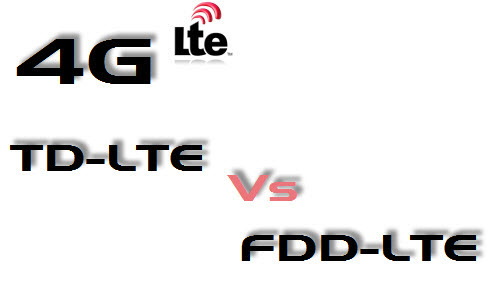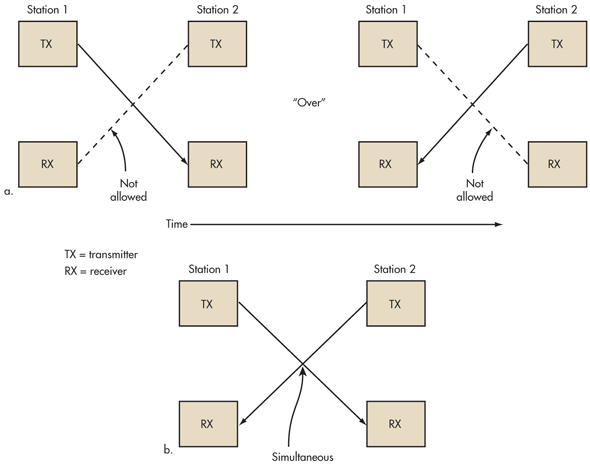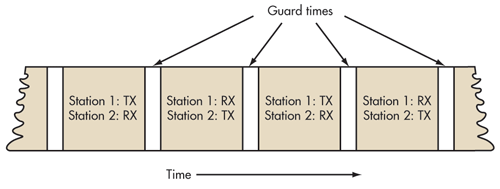Since 4G Technology is becoming more and more known, most people may know TDD or FDD, but may not know the difference between the two technology clearly. It’s obevious that FDD LTE network is more commonly deployed and launched to commercial. So what’s the advantage of FDD-LTE 4G network?
Before we introduce the compare TDD and FDD, let us simply introduce the communication system. Depending on whether two sides could simultaneously transmit data, there exist three transmission techniques:
First one is Simplex, which means one party transmits to the other party; the other party can only receive it and can’t transmit data simultaneously. There is only one frequency spectrum used. The traditional radio(non-interactive) and television is just this communication method.
Second one is Half Duplex, which means both party in two sides could transmit and receive data, but not at the same time. There is only one frequency (channel) used, but there are two ways. Walkie-talkies or other two-way radio systems are this communication method application.
Third one is Duplex, which means both party in two sides could transmit and receive data simultaneously, The communication is two-way and two frequencies (channels) are used – one for transmitting and one for receiving.
From above introduction, it’s clear that Duplex is the most efficient communication system. The providers all over the world upgrade their network from 2G GSM to 3G UMTS, and now to 4G LTE or WiMAX, which is just to improve the communication efficiency. That’s why the 4G LTE FDD and TDD were born.
FDD, the abbreviation of Frequency Division Duplexing, stands for the communication is done on only one frequency, but the transmitting and receiving data are at different time. This method of communication is using Half Duplex system.
TDD, the abbreviation of Time Division Duplexing, stands for the communication is done on two independent frequencies and the transmitting and receiving data are simultaneous. It’s typical Duplex communication system.
The advantage of TDD could obviously come into reflect when the uplink and downlink data transmissions are not symmetrical. A typical disadvantage of TDD is the need to use guard periods between the downlink and uplink transmissions. So if downlink and uplink are both busy, TDD may great pressure for data transmission.
The advantages of FDD are typically observed in situations where the uplink and downlink data transmissions are symmetrical (which is not usually the case when using wireless phones). More importantly, when using FDD, the interference between neighboring Radio Base Stations (RBSs) is lower than when using TDD. Also, the spectral efficiency (which is a function of how well a given spectrum is used by certain access technology) of FDD is greater than TDD.
In fact, the two LTE versions TDD and FDD are very similar, just the physical layer are different. So the UEs could support both of TD-LTE and FDD-LTE with only one chipset, which can come true based on only minor modifications. So the mobile broadband with the chipsets below will be able support both LTE TDD and FDD.
- ST-Ericsson (M700/M710 chipsets)
- Altair Semiconductor (FourGee-6150 chipset)
- Qualcomm (MDM9200/MDM9600 chipsets)
And per the official information, HUAWEI E392 and E398 are both the UEs which could support TD-LTE and FDD-LTE model. But with different version, some of them may only support single version.
Conclusions
FDD is an older scheme that was best suited for applications, such as voice, that generate symmetric traffic, while TDD is best suited for bursty, asymmetric traffic, such as Internet or other datacentric services.
* In TDD, both the transmitter and receiver operate on the same frequency but at different times. Therefore, TDD systems reuse the filters, mixers, frequency sources and synthesizers, thereby eliminating the complexity and costs associated with isolating the transmit antenna and the receive antenna. An FDD system uses a duplexer and/or two antennas that require spatial separation and, therefore, cannot reuse the resources. The result is more costly hardware.
* TDD utilizes the spectrum more efficiently than FDD. FDD cannot be used in environments where the service provider does not have enough bandwidth to provide the required guardband between transmit and receive channels.
* TDD is more flexible than FDD in meeting the need to dynamically reconfigure the allocated upstream and downstream bandwidth in response to customer needs.
* TDD allows interference mitigation via proper frequency planning. TDD requires only one interferencefree channel compared with FDD, which requires two interference-free channels.
* In summary, TDD is a more desirable duplexing technology that allows system operators to receive the most from their investment in spectrum and telecom equipment, while meeting the needs of each individual customer.



